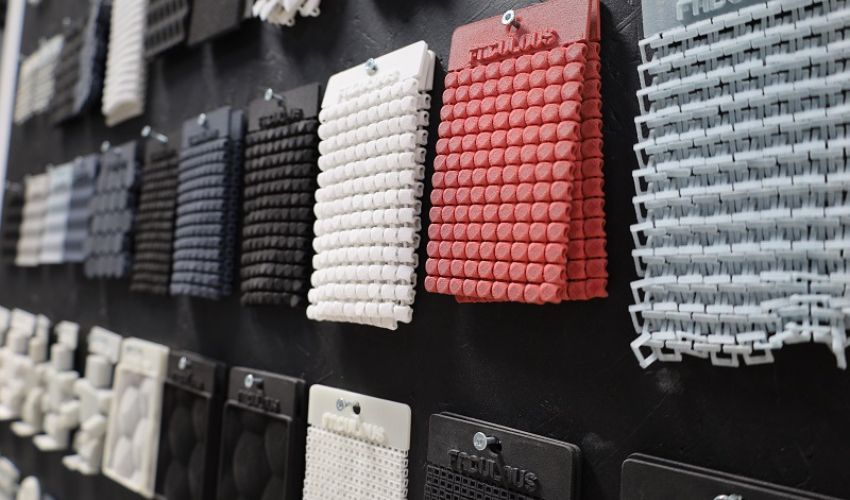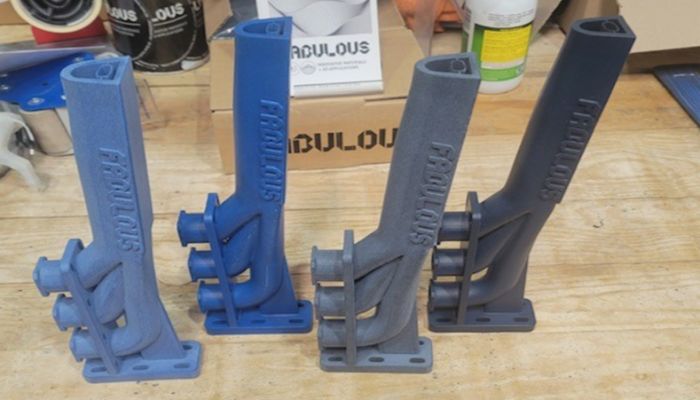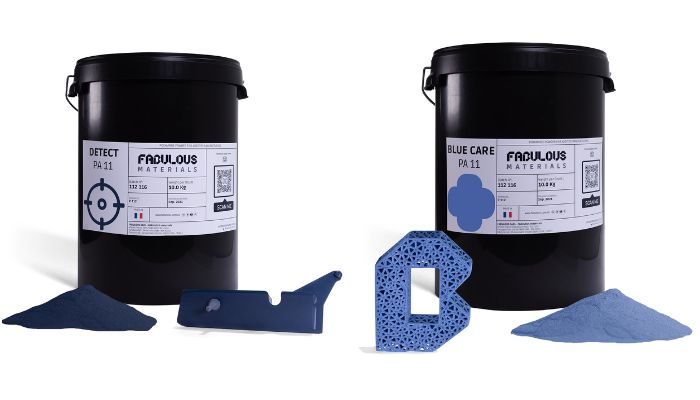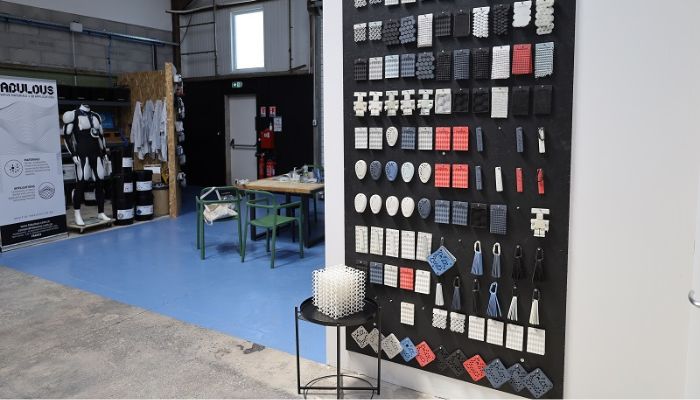FABULOUS Sets Course for the USA with Certified, Food-Safe 3D-Printing Materials

It is no secret that 3D printing is becoming more and more popular and is expanding its field of application to diverse areas. Already established in the verticals of aerospace, the automotive sector and the medical field, additive manufacturing is now being used for the production of consumer and luxury goods, in the construction industry and also in the food industry. On the one hand, this primarily involves innovative, edible products from the 3D printer, such as those already marketed by Barilla, Revo Foods and Steakholder Foods. On the other hand, 3D printing is increasingly being used to produce objects that come into contact with food. These are, for example, food nozzles, grippers, scrappers, plates, cutlery, packaging etc. or machine parts.
All items that interact with food must adhere to strict regulations to ensure the safety of consumers. Such rules and safety standards are a must for end users, but a significant challenge for material manufacturers, as the regulations of the relevant authorities are stringent. In the EU, Directive 10/2011 regulates the criteria for polymer materials to be certified as “food-safe”. In the United States, the Food and Drug Administration (FDA) regulates the materials and procedures for food safety, specifically the Code of Federal Regulation Title 21 (CFR21). The rules are, therefore, slightly different in each country, and the approvals also vary depending on how a material is processed.

Food nozzles 3d printed in BLUECARE and DETECT materials. Some of them were post-processed by vapor smoothing.
PLA, for example, is considered a food-safe material by the FDA, but only if it is not colored; the same applies to PETG. As these materials are mainly processed using the FDM process, there is a further problem, as the materials could become contaminated through contact with nozzles and hoses. SLS 3D printing eliminates this fundamental problem, making the process more suitable for processing food-safe materials. However, if taking a closer look at the available materials – PA11 and PA12 – there is only a limited number of certified materials that are truly safe for the end user. One manufacturer trying to close this gap is FABULOUS. The French company has already made a name for itself in Europe with its technical 3D printing materials and is now looking to gain a foothold in the North American market, thanks to its international patent extension to the United States.
FABULOUS produces certified food-safe PA11
FABULOUS has always focused on applications and end users when developing its materials, creating innovative yet accessible materials. FABULOUS’ polymer powders can be used on around 90% of available SLS machines and are competitively priced. Although the company also offers PA12 powders, its product range is dominated by PA11 materials. This makes FABULOUS stand out from the crowd of nylon powder material manufacturers. Although some of these manufacturers offer food-safe materials, these are never PA11-based. FABULOUS, on the other hand, has enjoyed great success in Europe with its food-safe PA11-based powders, and the company is now looking to build on this success in North America.

The French company Fabulous develops food-safe PA11
In contrast to PA12, PA11 is characterized by its biological origin and is also recyclable. This is one of the reasons why more and more companies are now using PA11 to manufacture end parts. With its wide range of materials, FABULOUS has already gained an advantage over the competition in Europe and is aiming to extend these business opportunities to other latitudes.
The BLUE CARE and DETECT materials played a key role in the European success. These can be used for blue safety plastic parts, which are used in various industrial sectors for production lines and enable the identification of foreign bodies or plastic fragments in food due to their optical blue conspicuousness. Both are bio-based and natural raw materials and have been developed into PA11 powder for 3D printing without additives or organic pigments. Moreover, PA11 is truly food-contact certified compared to PA12. Indeed, PA12 comes from petroleum and is not FDA compliant for 3D printed parts. Also, it is composed of additives including titanium dioxide banned by the European Union. That is why PA11 blue and detectable powders guarantee health safety for the end consumer and ensure the necessary certifications. Both materials are certified as food-safe in Europe according to EU /2011 – 1935/2004 and in the USA according to FDA CFR 21, which is the highest food contact certification that applies in the USA.
FABULOUS will present its materials at RAPID + TCT in Los Angeles. These are already available, and partnerships have already been established with machine manufacturers and dealers in the USA. To further expand its Safety & Security range, FABULOUS is currently researching other innovative materials that should be launched on the market by the end of the year. You can get an idea of the FABULOUS materials already available HERE and see them for yourself at RAPID + TCT on several partners’ booths including ARKEMA’s one.

Check out the FABULOUS materials at RAPID + TCT.
What do you think of FABULOUS and its food safe materials for 3D printing? Do you make parts that come into contact with food? Let us know in a comment below or on our LinkedIn, Facebook, and Twitter pages! Don’t forget to sign up for our free weekly newsletter here, the latest 3D printing news straight to your inbox! You can also find all our videos on our YouTube channel.
*All Photo Credits: FABULOUS






